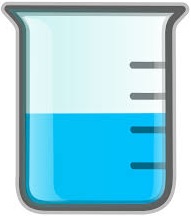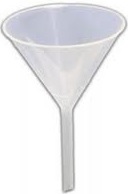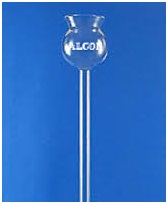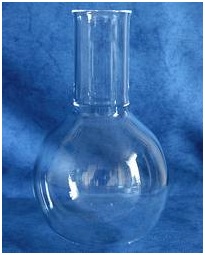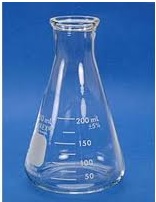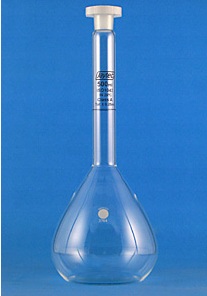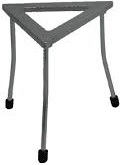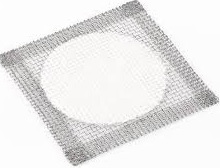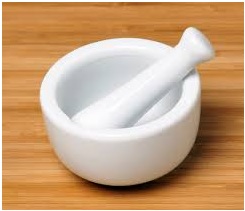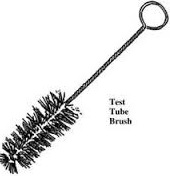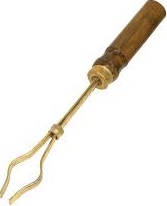2. LABORATORY TECHNIQUE AND SAFETY
LABORATORY TECHNIQUE AND SAFETY
What is a laboratory?
This is a special building where scientific experiments are being conducted.
What is a chemistry laboratory?
This is a special building where chemistry experiments are being conducted.
A chemistry laboratory is supplied with gas, electricity and water.
NB: Working in a laboratory is fun because a lot of interesting experiments are done but it can be a very dangerous place for you and others if safety regulations are not followed.
LABORATORY RULES
These are the rules that help to avoid accidents that may occur in the chemistry laboratory.
They are as follows:
-
Ask for permission to your teacher or laboratory assistance before you enter in the laboratory.
-
Do not run or play in the laboratory.
-
Do not eat, drink, taste or smoke in the laboratory.
-
Obey orders immediately from your teacher or laboratory assistance as to avoid accidents.
-
Do not conduct any experiments unless your teacher or laboratory assistance tells you to do so.
-
Do not switch on/off the gas and water taps till you are instructed to do so.
-
Report accidents immediately to the laboratory teacher responsible or laboratory assistance.
-
Wash apparatus before and after using them.
-
Wash your hands after conducting any experiments.
-
Observe the safety labels on the containers of the chemical and take necessary precautions.
SAFETY MEASURE FOR A CHEMISTRY LABORATORY
I/ All chemicals should be well- labelled to prevent a students
II/ Laboratory should contain first aid kit which will be used when people get accidents
III/ Chemical that easily react with each other should never be stored together
Iv/ There should be fume chamber in the laboratory to minimize unexpected gas leaks or emissions.
V/ All students must wear safety glasses (goggle) at all times.
VI/ Shoes (no sandals) must be worn at all time ,Bare feet or open shoes are not permitted in the laboratory.
VII/ All students must wear lab coat at all time .
VIII/ All students should know the location of the extinguishers and fire blankets.
IX/ All students should know the emergency evacuation route.
FIRST AID
Introduction
We must take precautions to avoid accidents in the laboratory. When an accident occurs it must be attended properly first.
What is first aid?
It is an immediate help/treatment given to a victim who has got an accident or injury before taking him/her to the hospital.
1; What are the common accidents in the lab?
- Possible causes of accident in chemistry laboratory are;
-
Burns from open fires or boiling chemicals.
-
Cuts on hands or fingers.
-
Swallowing chemicals For example; when sucking alkali in the titration process.
-
Having corrosive chemicals on the hands.
2; What is the importance of first aid?
-
It saves the life of a victim.
-
It reduces pain.
-
It brings hope and encouragement to the victim.
-
It prevents further bleeding.
-
It helps in quick recovery of the victim's wound.
FIRST AID KIT
This is a small box consisting of different instruments and chemicals needed for first aid.
It has a sign of a red cross. It is placed in a safe and accessible place.
INSTRUMENTS AND CHEMICALS FOUND IN THE FIRST AID KIT
|
Instruments/ chemicals |
Uses |
|
Pair of scissors |
For holding gauze |
|
Role of plaster |
For covering wounds |
|
Assorted bandage |
For cleaning/covering wounds |
|
Cotton wool |
Used for treatment on wounds and cut |
|
Razor blade |
For cutting bandage, plaster |
|
Gauze |
For covering wounds |
|
Safety pins |
For pinning bandages |
|
Adhesive plaster |
For attaching the bandage to the skin |
|
Forceps |
For holding things such as gauze |
|
Jar of petroleum jelly |
To apply on burns |
|
Iodine tincture |
To clean fresh wounds |
|
Gentian violet |
To apply on minor wounds |
|
Soap |
To wash hands and wounds |
|
Anti biotic solution |
For cleaning wounds |
|
Methylated spirit |
For cleaning wounds |
|
Pain killers |
Reducing pain |
|
Water |
For washing the wound |
BASIC CHEMISTRY LABORATORY
Laboratory is a special building where scientific experiments are conducted.
In order to do experiments we need;
1. Apparatus
2. Chemicals
1. APPARATUS
These are instruments used to carry out scientific experiments in the laboratory.
CLASSIFICATION OF APPARATUS
We can group or classify apparatus into two groups;
-
Material made (what are they made of)
-
Uses (what are they used for)
a. MATERIAL MADE
-
Apparatus made of glass
Large numbers of chemical apparatus are made of glass.
Why?
It's because of easy observation for chemical reaction. Example: test tubes, beakers, flasks. -
Apparatus made of iron.
Example:Tongs, Bunsen burner, tripod stand
-
Apparatus made of wood
Example: test tube racks, test tube holders - Apparatus made by clay
Example: Tiles, evaporating dish, motor and pestle
- Apparatus made of plastic
Example beaker washing bottle, funnels, Tiles, evaporating dish motor and pestle and tiles.
CHEMISTRY LABORATORY APPARATUS ACCORDING TO THEIR USES
-
Apparatus used for holding liquid i.e. beakers ,test tubes ,flat bottomed flasks and conical flasks.
-
Used for measuring liquid i.e. measuring cylinders ,burette ,beakers and pipette.
-
Used for measuring solids i.e. spring balance, pan balance, beam balance, chemistry balance.
-
Used for heating i. e. crucibles, evaporating dishes, test tubes.
-
Used for holding and supporting i.e. test tube racks ,tongs ,tripod stand and clamp.
-
Used for boiling i.e. cork borers.
-
Used for transferring liquid i.e. dropper funnels.
-
Used for transferring solids i.e. spatulas.
CHEMICAL APPARATUS AND THEIR USES
|
Apparatus |
Uses |
|
Test tube |
For heating For watching or observation of reactions For holding liquids |
|
Beaker |
For holding liquids For heating For observations |
|
Filter funnel |
For transferring liquids |
|
Thistle funnel |
Used for transferring liquids |
|
Dropping funnels |
Used for transferring liquids |
|
Separating funnels |
Used for separating immiscible liquid example kerosene and water |
|
Round bottomed flask |
Used for mixing reagents in preparation experiment |
|
Conical flask |
Used for mixing reagents during experiments |
|
Flat bottomed flask |
Used for heating reagent during experiment |
|
Distilling flask |
Used in distillation process |
|
Measuring cylinder |
Used for measuring volumes of liquids |
|
Dropper |
Used for transferring solution from a container |
|
Watch glass |
Used for holding a solid sample |
|
Pipette |
Used for delivering or measuring fixed volumes of liquids. |
|
Burette |
To provide control of the volumes of liquid during experiments and also to measure an accurate volume. |
|
Volumetric flask/Graduated |
For measuring accurate volumes of liquids -For preparing solution of accurate concentration e.g. titration |
|
Spatula |
Handling chemicals and transferring them to the container. |
|
Tripod stand |
For supporting containers during heating |
|
Wire gauze |
Prevent flame from direct heating Support apparatus on tripod stand |
|
Motor and pestle |
For grinding solid chemicals to powder |
|
Trough |
For holding water and below the shelf during preparation of gases |
|
Test tube brush |
For cleaning of test tubes |
|
Tongs |
For holding hot objects when heating. |
|
Delivery tube |
For preparation of gases |
|
Retort stand |
For supporting other pieces of apparatus |
|
Condenser |
For cooling water vapor to form water during distillation |
|
Gas jar |
For collecting gases |
|
Bunsen burner |
Source of heat Production of flames for heating. |
|
U –tube |
For drying gases. |
|
Clamp |
For supporting the apparatus |
|
Beehive shelf. |
For preparation of gas |
|
Dissector |
To protect chemicals which are hygroscopic or which react with water from humidity |
|
Test tube rack stand |
To hold/support test tubes containing chemicals |
|
Test tube holder |
To hold/support test tube containing chemicals |
|
|
|
WARNING SIGNS
Warning signs are labels on chemical containers that help you to know what you can do or what you cannot do with different chemicals.
Warning signs help you to avoid dangerous accidents in the chemistry laboratory.
Examples of warning signs:
-
Harmful or irritant
-
Flammable
-
Corrosive
-
Toxic
-
Explosive
-
Oxidizing agent
HARMFUL
A harmful chemical are dangerous to your health thus it can make you sick, if it is not used properly.

TOXIC
A toxic chemical can cause death immediately or after a few days when they enter your body. Therefore, do not allow such chemicals to enter your body parts. E.g. The eyes, skin, mouth, or ears.

FLAMMABLE
A flammable chemical or substance can catch fire easily. They should never be brought on an open flame. Examples ethanol, petrol,methylated spirit.
NB: Put all burners off before working with flammable chemicals.
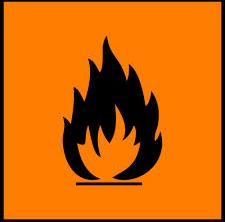
OXIDANT(OXIDIZING AGENT)
This is a chemical substance which supports burning substance thus materials will burn faster.
Examples: Potassium permanganate (KMnO4).
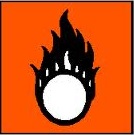
EXPLOSIVE
This is a forceful rapid reaction which involves throwing particles at high speed. It’s very dangerous to keep explosives in a glass container.
Why?
Because if an explosion occurs, glass will fly around the place and cause injuries to people, so handle with care all chemicals containing explosive signs.
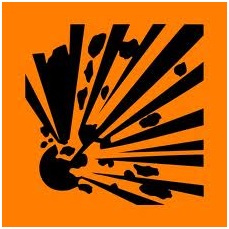
CORROSIVE
A corrosive chemical is a substance that can burn your skin. It causes blindness if it gets into your eyes. Pour a lot of water on the affected part so as to reduce concentration of the chemical or substance.
Examples of corrosive chemicals are;
-
Concentrated acid
-
Sulphuric acid
-
Hydrochloric acid
-
Nitric acid
-
Concentrated alkali
-
Sodium hydroxide
-
Potassium hydroxide.

REVIEW QUESTIONS
1. (I) Define the word laboratory .
(II) Mention at least ten chemistry laboratory rules .
2. Mention and explain the safety measures needed to avoid accidents in chemistry laboratory.
3. (i) Identify possible causes of accidents in a chemistry laboratory
(ii) Mention all the items found in a first Aid kit.
4.Give the names of three apparatus used in a chemistry laboratory in each of the following below;
a/ (i)Apparatus for holding thing_________,____________,_____________.
(ii)Apparatus for taking measurements_________,____________,_________.
(iii)Apparatus for heating purpose _________,_____________,___________.
(iv)Apparatus for doing chemical reactions _________,_________,_________.
b/Give the user of each chemistry apparatus you have mentioned apparatus.
5. (a) Define the word warning signs
(b) Draw and label the basic chemical warning signs.

